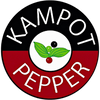There is only one true and original pepper. It comes from the fruits of the plant known as black pepper vine, from which black, green, white, and red pepper are obtained. However, the market offers a much wider range of various types of spices labeled as pepper, but they have nothing in common with classic pepper at all.
Tastes like pepper, but it is not pepper
A well-known example can be Sichuan pepper, also known as fagara. Under this name, you should imagine dried fruits of a Chinese ash species, which have a distinctive aromatic taste. It can be even numbing, so Sichuan pepper is used in small amounts, most often to season poultry. A close relative is sancho pepper, also known as Japanese pepper, which is one of the few dry spices used in Japanese cuisine.
A widely known pepper that is actually not pepper is Brazilian pepper, also called pink pepper (mistakenly referred to as red). These are the dried pink berries of a tree from the Anacardiaceae family, growing in long clusters. The pink berry skin is sweet but astringent. The berries are often mixed into various pepper blends, creating an original colorful mosaic.
The taste of false pepper can be unpleasantly astringent
Pippali, also known as long pepper, are dried fruits of a plant from the peppervine genus, but not black pepper. It is a specific type of spice that smells similar to classic pepper but completely lacks the characteristic pungency and is rather sweet and astringent. It is not very well known here but is widely used as a spice in India.
Equally unknown to us may be cubeb pepper. This name refers to the fruits of vines growing in Java, Borneo, or Sumatra. Their peculiarity is that they are almost not cultivated and are therefore collected from wild plants. The fruits, which taste like new spices, are slightly larger than classic pepper.
The basic substance of this spice is called cubebin, which is also found in African pepper. This is also known under names such as ashanti or West African tailed pepper. In the regions where it grows, that is in the western, central, and eastern parts of the continent, it is used as a substitute for classic pepper, differing from it by a herbal flavor that is also nowhere near as pungent.
Want to continue reading? We have prepared another part for you of the pepper revelations!














